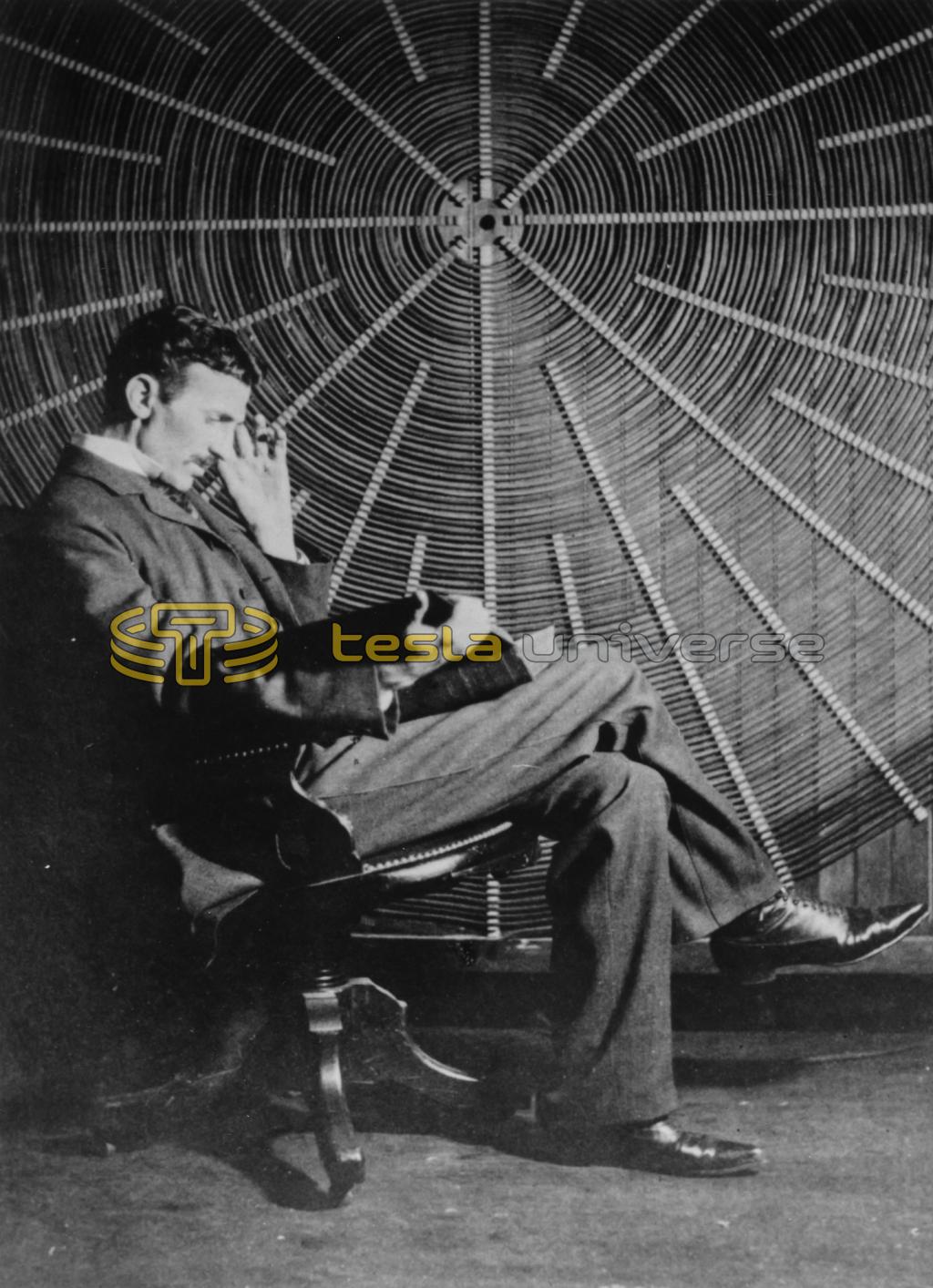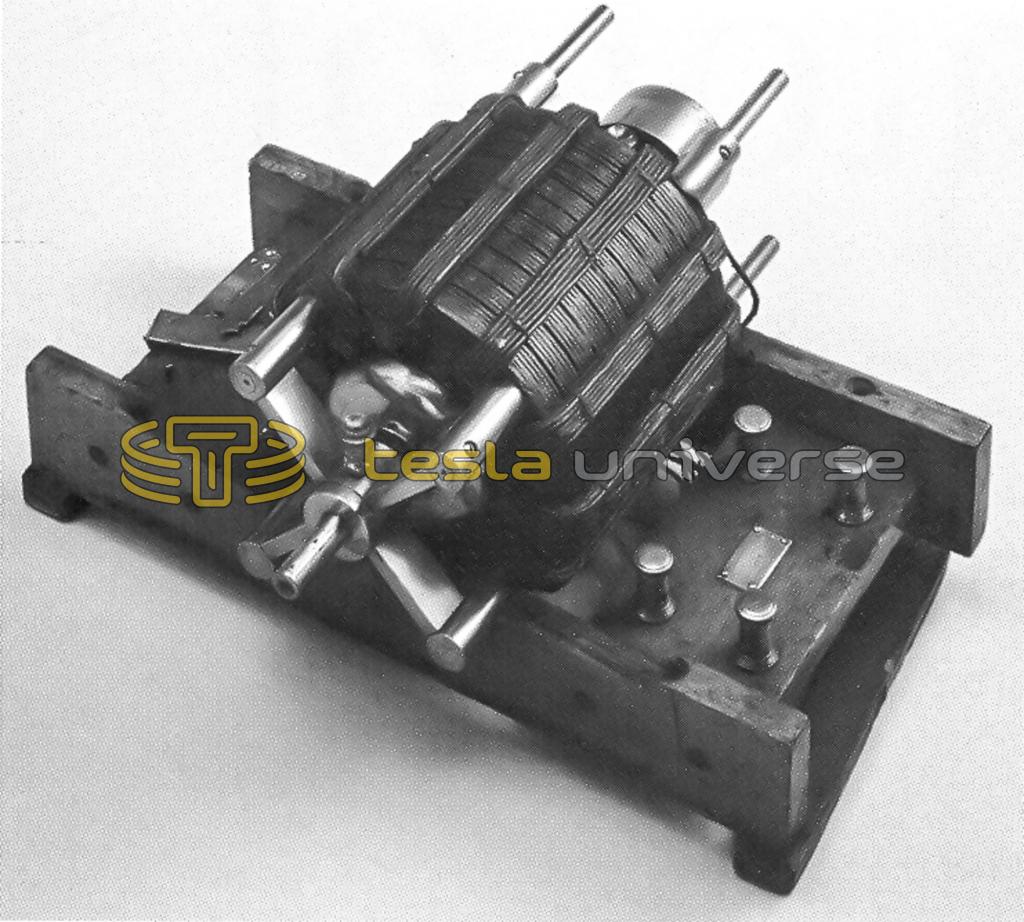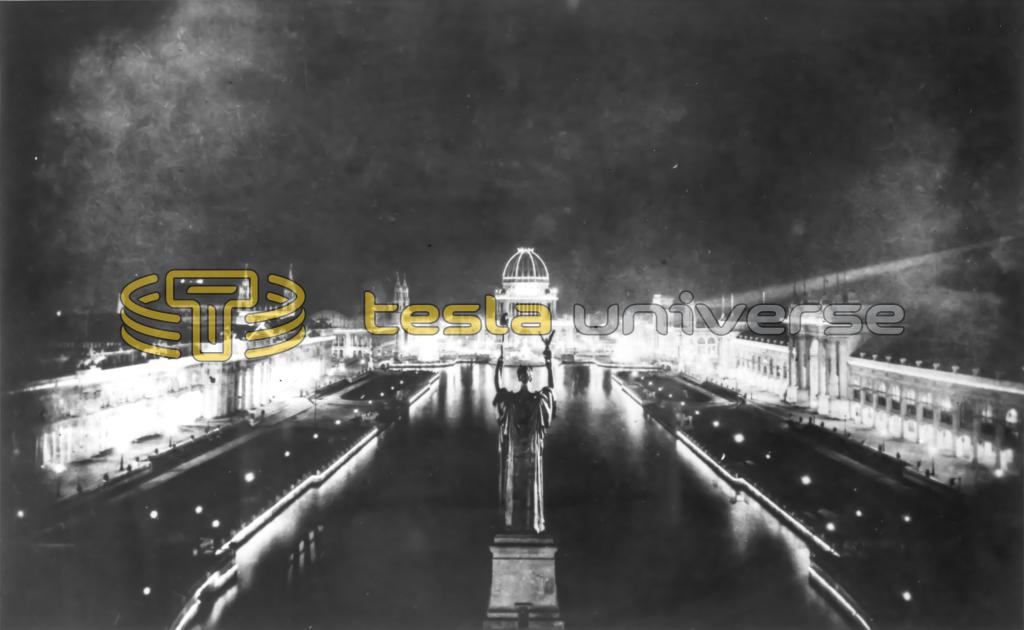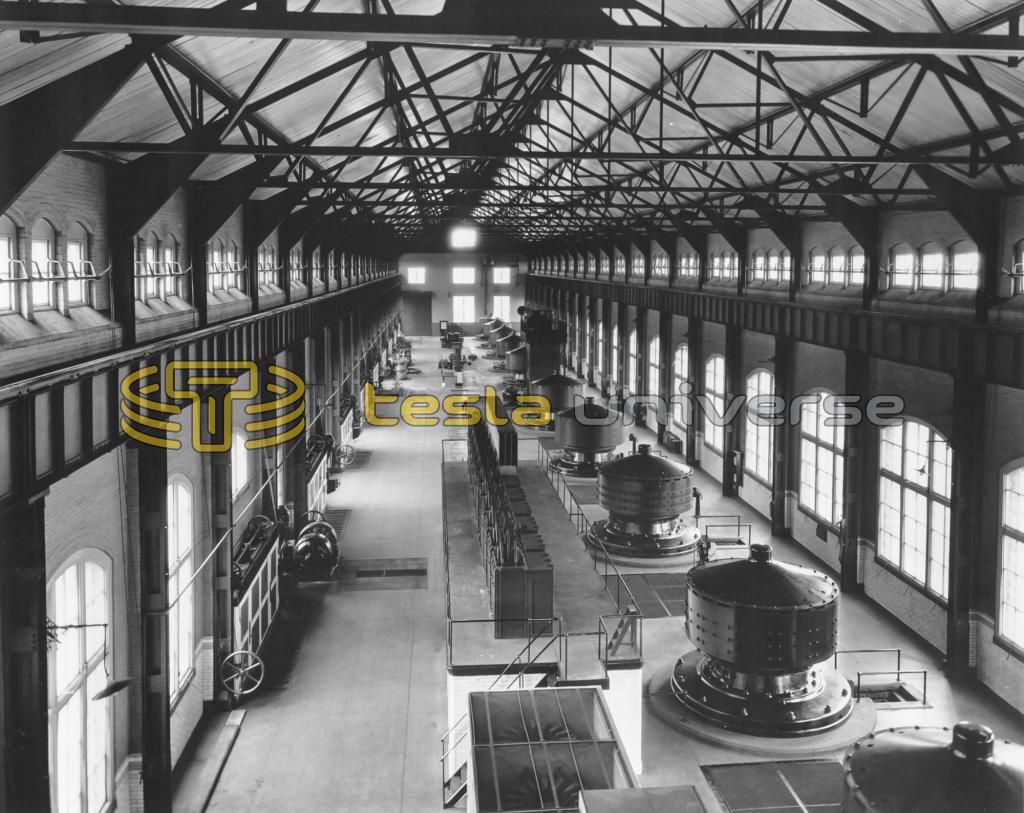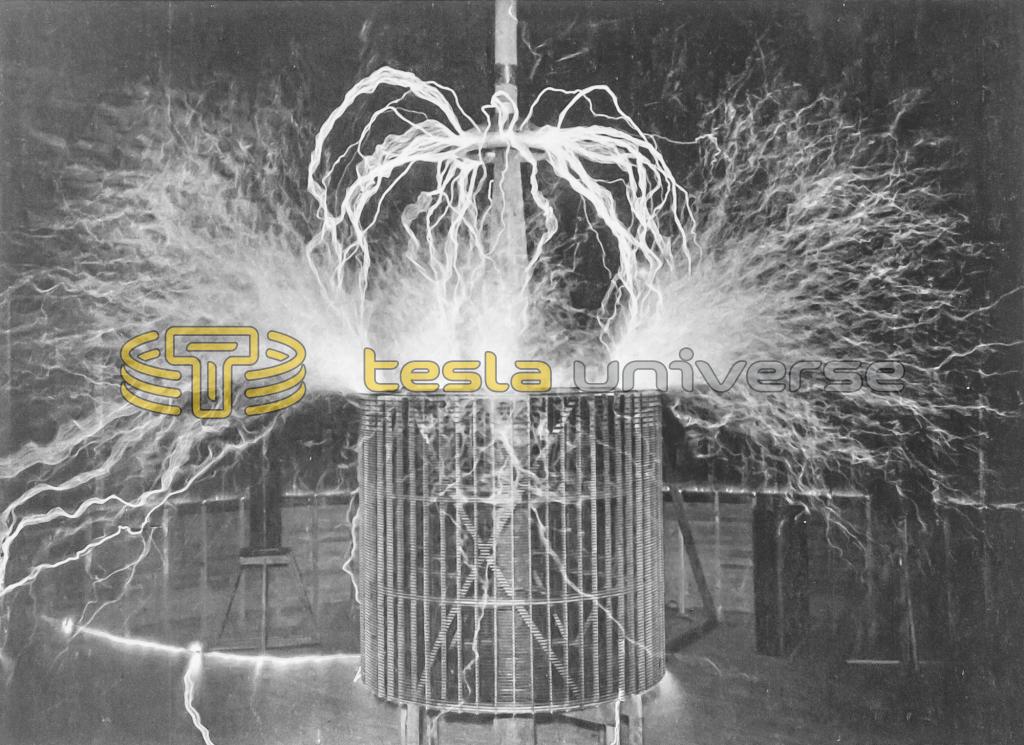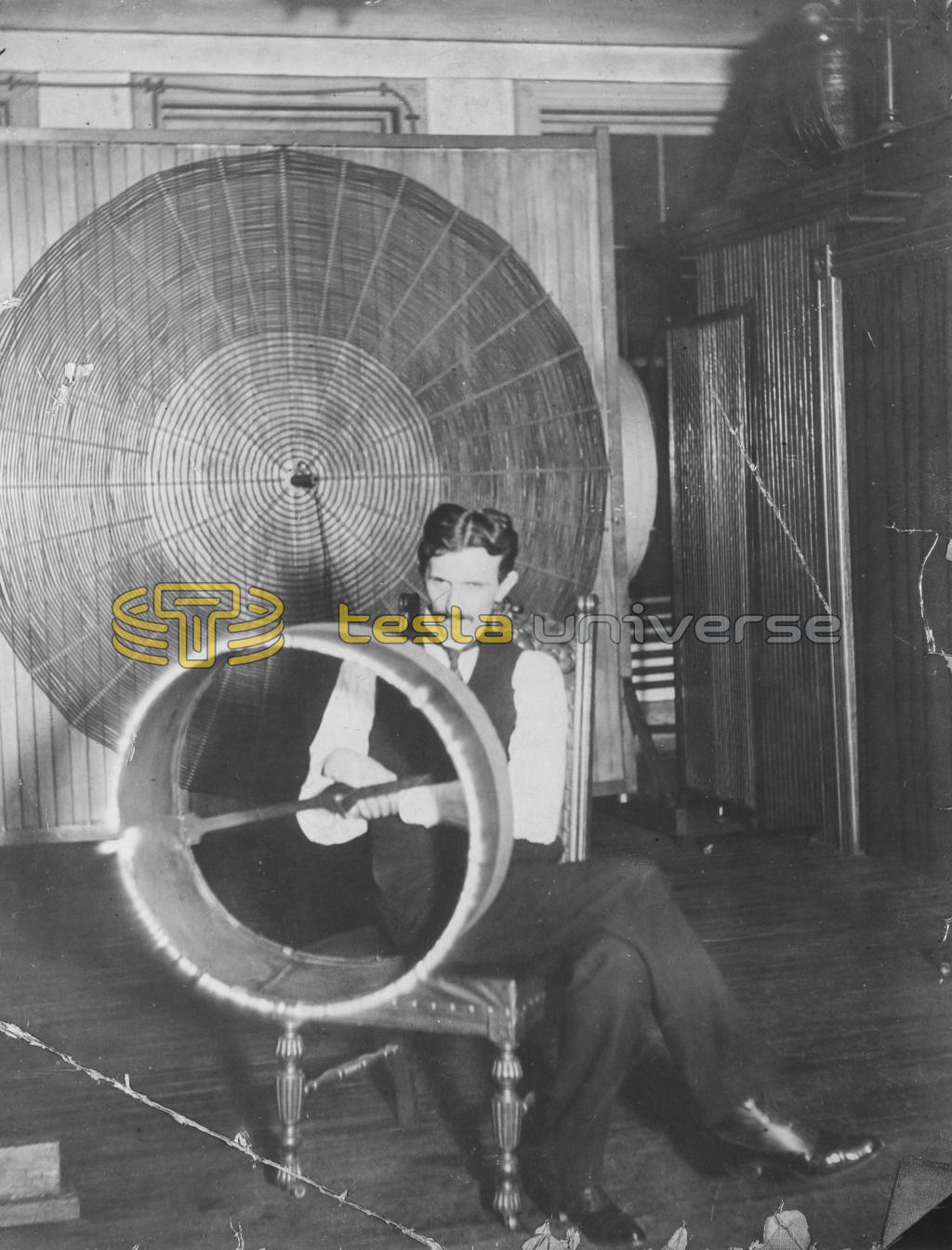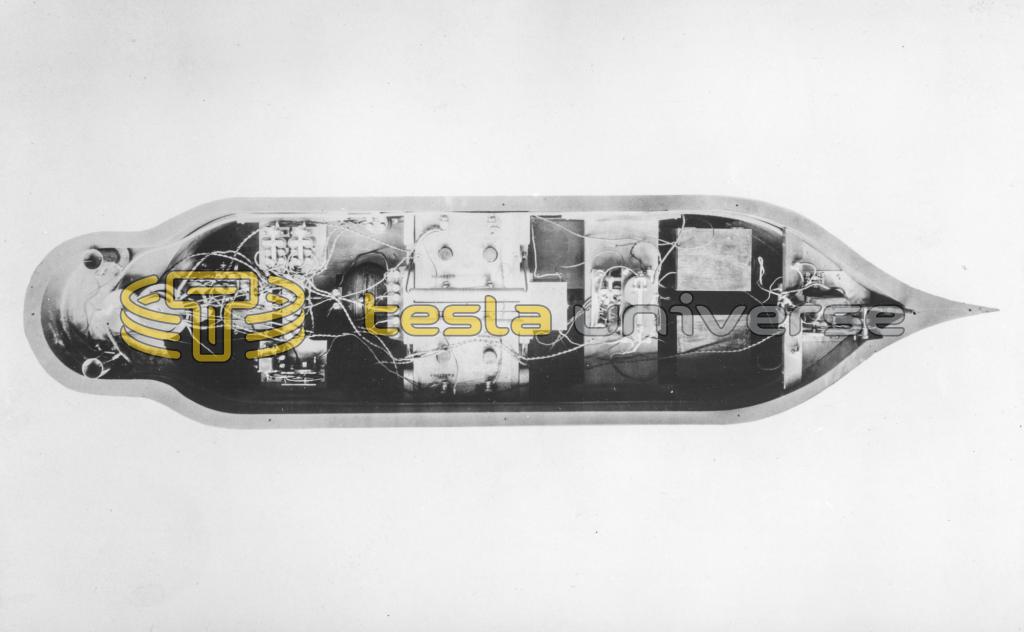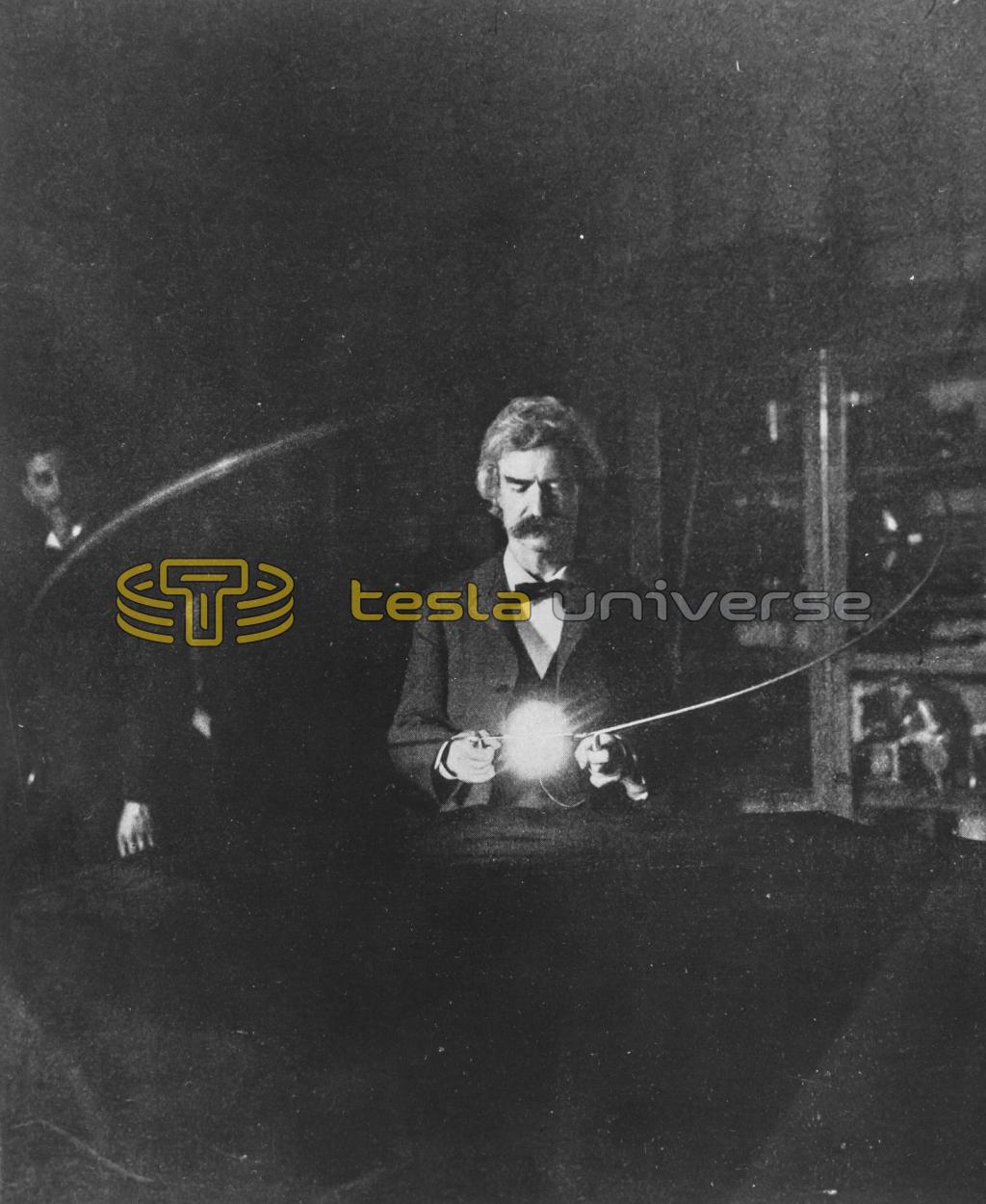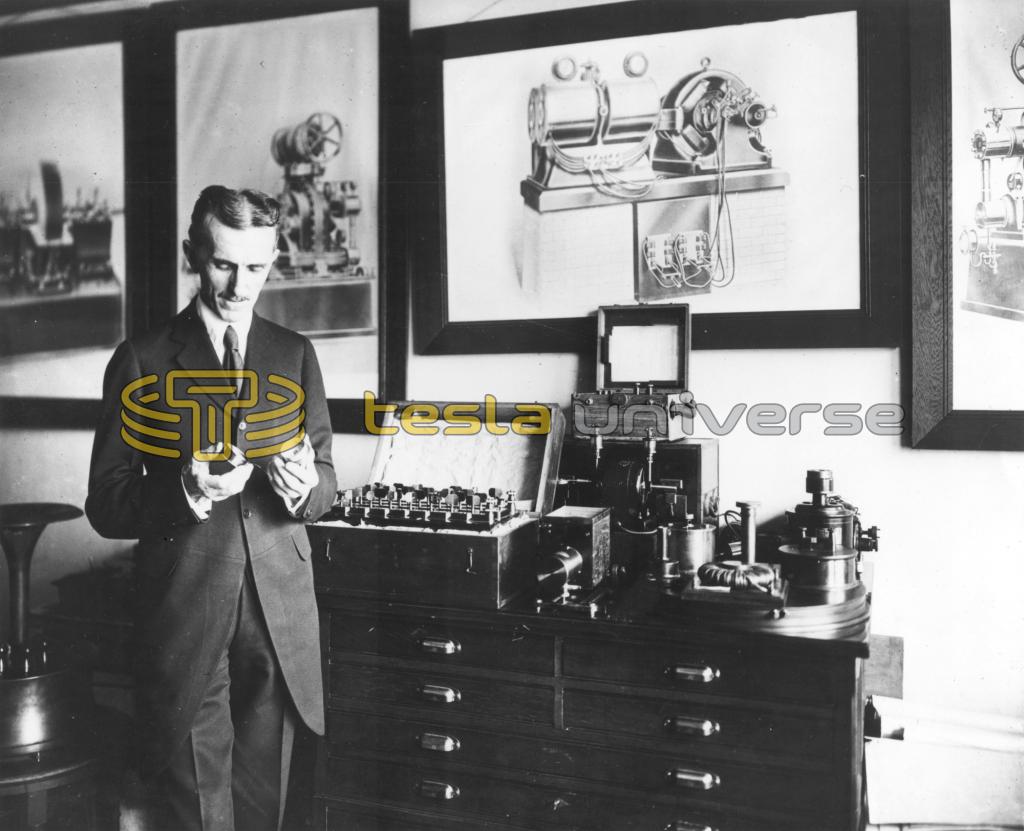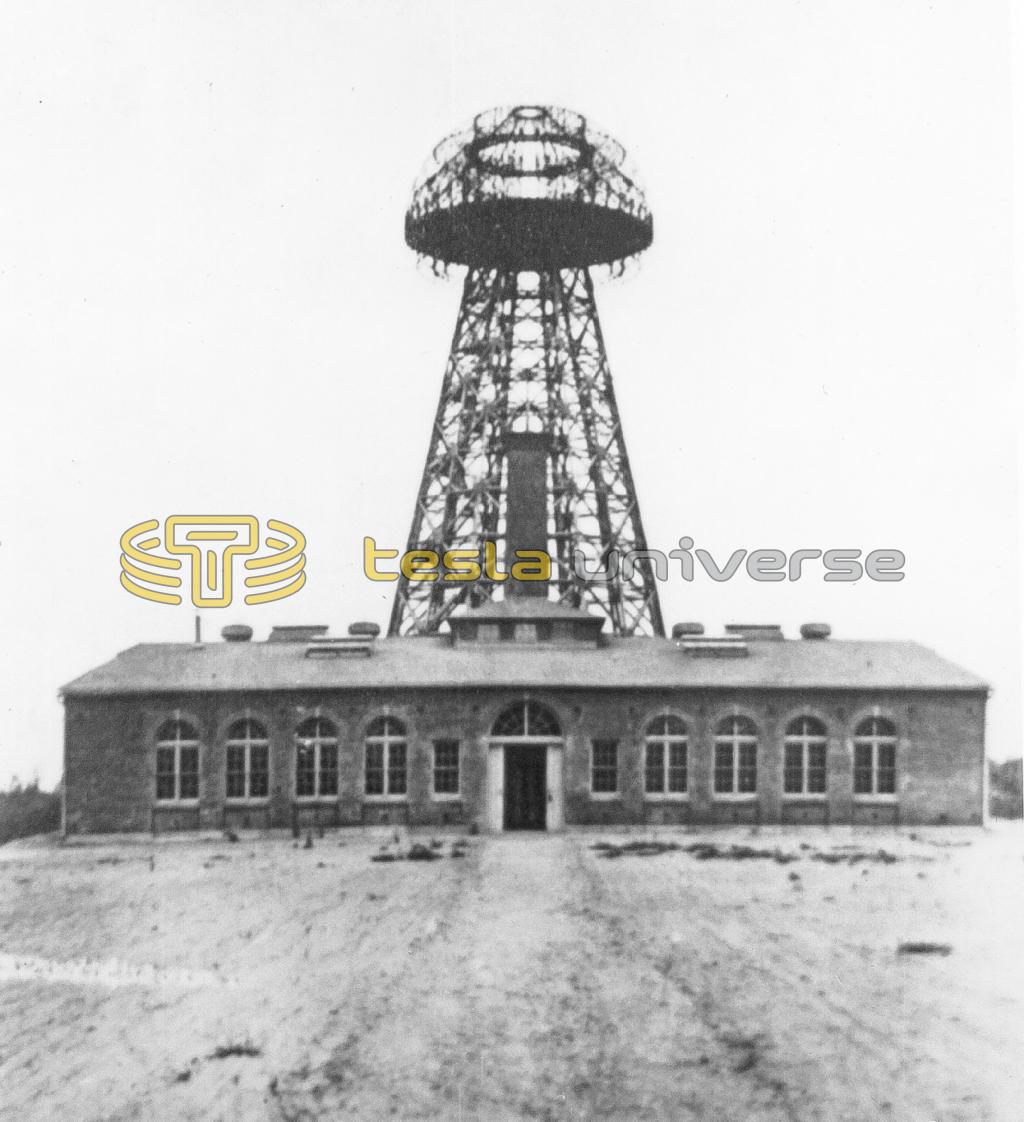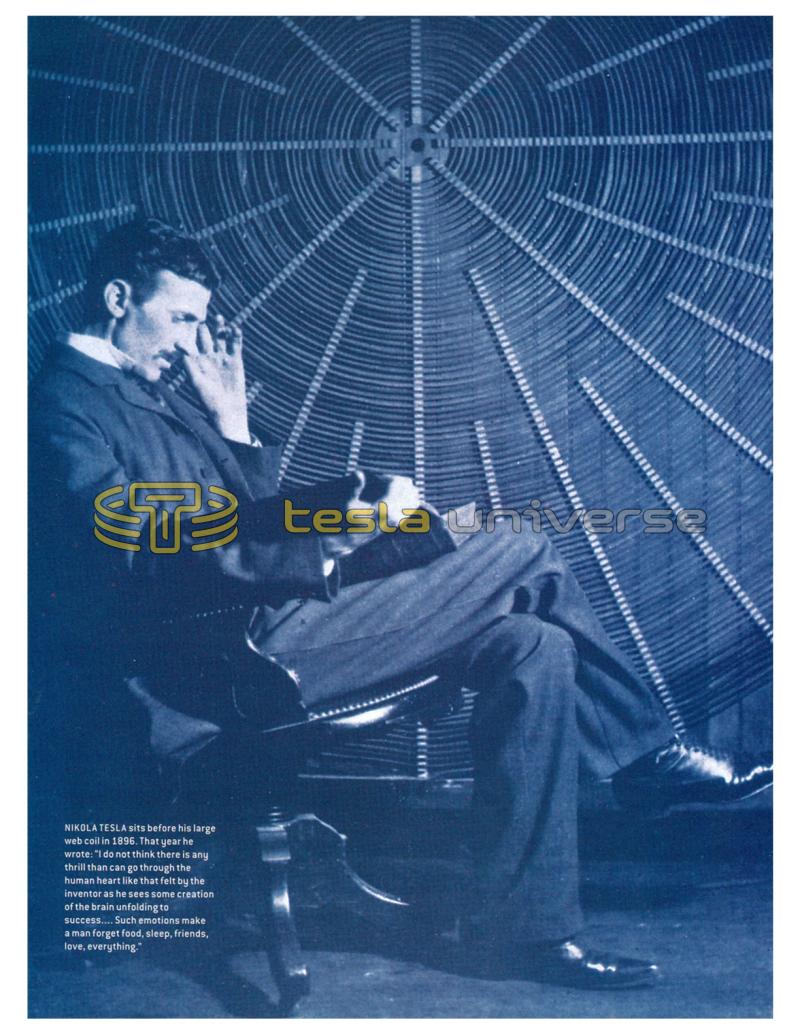
Nikola Tesla Articles
Inventor of Dreams
Nikola Tesla, the father of today's AC electrical system and other key inventions, often failed to bring his visionary ideas to real-world fruition
When members of the Chicago Commercial Club arrived to hear a lecture by the famed electrical inventor Nikola Tesla on May 13, 1899, they were startled by the sight of an artificial lake sitting in the middle of the auditorium. Everyone knew that Tesla — the man who had devised the alternating-current (AC) system that brought electricity into people's homes and businesses — was a master showman. Six years earlier at Chicago's Columbian Exposition, for example, the dapper engineer had dazzled spectators by sending 250,000-volt shocks coursing through his body. Now the audience was abuzz, wondering what Tesla was going to do with his miniature lake and the six-foot boat that floated on its surface.
Abruptly, the craft began to motor around the pool on its own, with lights blinking. From the side, Tesla operated a remote-control unit that conveyed commands to the boat via invisible radio waves. The crowd was astonished. He then invited individuals to shout out commands: "Turn left! Flash the lights!" Using his wireless transmitter, Tesla signaled the boat, and it executed the requested maneuvers [see illustration on page 83]. With the Spanish-American War having just come to an end, the audience was impressed by Tesla's proposal to arm a larger vessel with dynamite and then steer it by remote control toward an enemy naval ship. Here, more than a century ago, was a prototype for the guided missile.
Overview/Nikola Tesla
- Nikola Tesla (1856-1943) was a Serbian-American inventor and researcher who discovered the rotating magnetic field, the basis of most alternating-current (AC) machinery — dynamos, transformers and motors. He also invented the Tesla coil, a high-voltage induction coil used widely in radios, televisions and other electronic equipment.
- Tesla was a great showman and a favorite of newspaper reporters who sought sensational copy. His outrageous claims that he communicated with other planets and had developed a death ray led to considerable criticism, however.
- Despite devising many important fundamental technical concepts, Tesla rarely bothered to engineer them into usable products. Sadly, he was impractical about financial matters and ended up dying in poverty and obscurity.
Despite this spectacular demonstration, Tesla never converted his remote-control boat into a full-fledged weapon. His failure to do so is emblematic of a larger theme that permeated his life — a profound idealism that only occasionally reached practical reality. Throughout his career, Tesla strove to find the perfect principle on which to base a revolutionary invention. Having identified a grand concept, he was willing to patent and demonstrate it, but he often left it to others to carry out the down-and-dirty work of engineering a moneymaking product. Sadly, as his career progressed, the famous inventor found it increasingly difficult to convince prospective backers to help with the messy process of commercialization. As a result, he grew ever more disappointed with and disconnected from the world.
As he admired the Budapest sunset, TESLA ENVISIONED the solution to his motor problem.
Motor Visionary
Tesla was born on July 10, 1856, to a Serbian family living on the frontier of the Austro-Hungarian Empire, in what is today Croatia. As a teenager, Tesla chose to study engineering at the Joanneum Polytechnic School in Graz, Austria. There the youthful scholar eagerly attended the physics lectures presented by Jacob Poeschl in 1876 and 1877.
During Poeschl's lectures, Tesla first started thinking about what would become his most important invention, an improved AC motor. One day he watched his professor attempt to control the troublesome sparking of a direct-current (DC) motor's brush commutator — copper-wire electrical contacts that reverse the current twice during each rotation so that the resulting opposing magnetic fields keep the rotor turning. Tesla suggested that it might be possible to design a motor without a commutator. Annoyed by the student's impudence, Poeschl lectured on the impossibility of creating such a motor, concluding: "Mr. Tesla may accomplish great things, but he certainly never will do this." The rebuke, however, merely stoked the fires of the youth's ambition. Tesla puzzled incessantly about how to make a spark-free motor as he pursued his studies in Graz and then in Prague.
In 1881 Tesla traveled to Budapest, hoping to work for family friends, Tivadar and Ferenc Puskas. An ambitious promoter, Tivadar had previously convinced Thomas A. Edison to give him the commercial rights to introduce inventions developed by the Wizard of Menlo Park in continental Europe. The Puskas brothers were planning to construct a telephone exchange in Budapest using Edison's improved telephone design. Unfortunately, they were unable to hire anyone immediately. While waiting, Tesla fell seriously ill. He only recovered with the help of a college friend, Anthony Szigeti, who encouraged the sick man to walk each evening to help regain his strength.
It was during one of these strolls with Szigeti that Tesla had an epiphany about motors. As they admired the sunset, Tesla suddenly envisioned using a rotating magnetic field in his motor — a major break with convention. The young Serb's insight was to invert the standard practice: rather than changing the magnetic poles in the rotor, he would alter the magnetic field in the stator. This configuration would eliminate the need for the sparking commutator. Tesla saw that if the magnetic field in the stator rotated, it would induce an opposing electric field in the rotor, thus causing the rotor to turn. He surmised that the rotating magnetic field could be created using AC instead of DC, but at the time he did not know how to achieve this feat.
Rags to Riches
Tesla struggled for the next five years to acquire the practical knowledge he needed to realize his motor. After he had helped the Puskas brothers build their telephone exchange in Budapest, Tesla moved with Tivadar to Paris, where they both went to work for the Société Electrique Edison installing incandescent lighting systems. In 1884 Tesla transferred to the Edison Machine Works in New York City. Unfortunately, he had almost no personal contact with the renowned inventor. While there, the Serbian inventor nearly told Edison about his motor idea. "It was on Coney Island," he recalled, "and just as I was going to explain it to him, someone came and shook hands with Edison. That evening, when I came home, I had a fever and my resolve rose up again not to speak freely about [my motor] to other people." A few months later, after Tesla had completed the design of an improved arc lighting system (illumination based on electric sparks leaping the gap between two electrodes), his managers reneged on a promised bonus, so the ambitious engineer quit in disgust.
Tesla was quickly hired by two business promoters from Rahway, N.J., Benjamin A. Vail and Robert Lane, who encouraged him to patent his arc lighting system so they could commercialize it. Tesla unwisely assigned the patents to the shifty pair, trusting that they intended to manufacture equipment and compete with Edison. Vail and Lane, however, decided that the real financial opportunity lay in operating an electric lighting utility. So once Tesla had his arc lighting system running in Rahway, his backers fired him and reorganized the firm. Utterly destitute after being abandoned, Tesla was forced to dig ditches.
Despite enduring a year of backbreaking hardship, Tesla mustered the energy in March 1886 to file a patent application for a thermomagnetic motor — a novel device powered by heating and cooling magnets. Discussions about his invention with the foreman at his ditchdigging job led to an introduction to Charles Peck, a clever attorney. Intrigued by the thermomagnetic motor concept, Peck offered to underwrite Tesla's research. Because Peck was not a technical expert, he invited Alfred S. Brown, a superintendent at Western Union, to join him in supporting Tesla.
Peck and Brown rented a laboratory for Tesla in lower Manhattan, where the immigrant inventor devoted himself initially to developing the thermomagnetic motor. When that concept proved unworkable, Peck pushed Tesla to work on perfecting AC motors. Building on his Budapest vision, Tesla began experimenting with multiple alternating currents in a motor. This approach was unconventional because most contemporary experimenters employed a single alternating current in their systems. By September 1887 Tesla discovered that he could produce a rotating magnetic field by feeding two separate alternating currents into pairs of coils set on opposite sides of the stator [see illustration on page 80]. In modern parlance, the two currents are 90 degrees out of phase, and the motor runs on two-phase current. Elated, Tesla submitted several patent applications that broadly covered the principle of a rotating magnetic field. In these filings, he introduced the idea that multiphase AC could transmit power over substantial distances, a notion that was to become important later.
When it became clear that Tesla's AC motor had real promise, his backers began pondering how to promote it. Peck and Brown planned to sell Tesla's patents to the highest bidder, rather than to manufacture motors. Toward that end, they arranged for Tesla to lecture before the American Institute of Electrical Engineers in May 1888. The talk received extensive coverage in electrical journals and soon attracted the interest of George Westinghouse, who had made a fortune manufacturing air brakes and signal systems for railroads. At this time, electric lighting companies were considering shifting from DC to AC, because AC could be transmitted over longer distances and thus reach more customers. Whereas Edison focused on DC technology, Westinghouse had bet on AC, and so Peck and Brown were able to convince him to pay handsomely for Tesla's patents. In July 1888 Westinghouse offered the group $25,000 in cash, plus $50,000 in notes and a royalty of $2.50 per horsepower for each motor manufactured. Tesla generously gave five ninths of the proceeds to his two supporters while retaining the rest for himself.
Tesla believed that his SIGNALS REACHED MARS and that he had received a return message from Martians.
Westinghouse hoped Tesla's motor could be used to drive streetcars, so Tesla went to Pittsburgh to adapt his design to this application. The inventor and the Westinghouse engineers were, however, stymied by technical difficulties. Because his motor required two alternating currents and four wires, it could not be merely dropped into existing single-phase AC systems; one would need to install additional wires to the network. Although Tesla developed several two-wire motors, these so-called split-phase designs ran best on currents of 50 cycles per second or less. At that time, Westinghouse single-phase systems employed 133-cycle current so customers would not see their incandescent lamps flickering.
Westinghouse engineers eventually solved these problems by modifying Tesla's motor and developing a new AC system using three-phase, 60-cycle current. Westinghouse demonstrated this new technology in dramatic fashion in 1895 by building a hydroelectric station at Niagara Falls, a plant that subsequently transmitted power across the 25 miles to factories in Buffalo, N.Y. Thus, Tesla's AC motor and multiphase AC system formed the basis for today's North American power-distribution system [see bottom illustration on page 81].
Resonating with Energy
Long before the Niagara station came on line, however, Tesla grew restless and left Westinghouse. He had come up with the ideal AC motor but wasn't interested in working out the details.
Drawing on his royalties, in 1889 Tesla established a new laboratory in New York City. To attract public attention and new investors, he now cultivated the image of an eccentric genius. Just as reporters had publicized Edison's exploits at Menlo Park in the 1870s, so they flocked to Tesla's laboratory in the 1890s to cover his sensational discoveries and dramatic pronouncements [see bottom illustration on opposite page].
Searching for a way to create an arc light for use on AC networks, Tesla now found a new fundamental ideal on which to focus: high-frequency electrical phenomena. If one could build a practical motor using 60-cycle AC, he wondered, what could be made of current with a frequency of 10,000 cycles per second? Whereas Tesla had combined magnetic induction coils, resistors and capacitors to fashion his split-phase motors, he now connected induction coils and capacitors in new configurations to produce high-frequency currents.
The inventor investigated this grand concept for the next 15 years. By likening a capacitor to a storage tank and an induction coil to a coil spring, Tesla realized that a properly configured circuit could amplify electrical signals and raise them to ever higher frequencies and voltages. Exploiting this insight, he constructed huge "magnifying transmitters" — today called Tesla coils — that generated sparks more than 135 feet long [see top illustration on opposite page]. Tesla further appreciated that resonance opened the way to tuning radio signals. Giving a transmitter a particular capacitance and inductance would generate signals at a desired frequency; likewise, endowing a receiving circuit with the same capacitance and inductance would allow it to respond to signals transmitted at that original frequency.
W. BERNARD CARLSON is associate professor of science, technology and society in the School of Engineering and Applied Science at the University of Virginia. He received his doctorate in the history of science and sociology from the University of Pennsylvania in 1984, and he studied business history as a postdoctoral fellow at the Harvard Business School from 1988 to 1989. He recently finished the seven-volume Technology in World History, which will be published in 2005 by Oxford University Press. With support from the Alfred P. Sloan Foundation, Carlson is currently completing a biography of Tesla to be published by Princeton University Press.
Drawing on the fundamental idea of electrical resonance, Tesla simultaneously pursued inventions in lighting, wireless communications and the wireless distribution of power. Hoping to develop a high-efficiency lamp to replace Edison's incandescent bulb, the brilliant inventor not only created early fluorescent lamps but also observed that a vacuum tube could detect radio waves. Tesla did not follow up on this observation, however, and J. A. Fleming and Lee De Forest subsequently developed their own radio tubes.
Having perfected the circuits needed to transmit and receive radio waves, Tesla tested them using antennas suspended from balloons floating over his downtown laboratory and his uptown Manhattan hotel. But just as he began to get promising results, his lab was destroyed by fire in March 1895, and all his research apparatus and notes were lost.
Broadcasting Power Globally
In the spring of 1899 Tesla closed his rebuilt New York laboratory and constructed a facility at the foot of Pikes Peak in Colorado Springs, Colo. There the inventor tackled what he believed would be the most important application for electromagnetic waves: the wireless transmission of power around the world. During that period, it seemed as if all of America was being wired. The demand for electricity appeared to be insatiable, so he dreamed of trumping the burgeoning landline networks by distributing both power and messages without wires.
Tesla's newest dream was based on electrical resonance. Like other early wireless researchers, he viewed the relation between transmitter and receiver as twofold. First, the transmitter sent radio waves through the air to the receiver. Then, because both devices were grounded to the earth, a return current passed through the ground from the receiver to the transmitter. Unlike everyone else, who focused on transmitting radio waves through the atmosphere, however, Tesla decided to concentrate on the earth-borne current. Why not, he thought, have the transmitter send waves through the earth to the receiver and then use the atmosphere for the return circuit? Tesla imagined that it should be possible for a transmitting station to pump electromagnetic energy into the earth's crust until the planet's electrical resonant frequency was reached; then, with the whole globe pulsing with energy, it could be tapped by receiving stations all over the world. Tesla assembled several large magnifying transmitters at Colorado Springs to test this theory and convinced himself that they had successfully broadcast power around the world. (Tesla also believed that his signals had reached Mars and that he had received a return message from Martians!)
Satisfied that power could be transmitted around the globe underground, he returned to New York City in 1900. So certain of success was he that he took rooms in the luxurious Waldorf-Astoria Hotel. Tesla then wrote a 60-page treatise for Century magazine entitled "The Problem of Increasing Human Energy." His promotional efforts paid off, and in 1901 tycoon J. Pierpont Morgan invested $150,000 in Tesla's wireless-power scheme. Tesla rapidly spent this advance, sparing no expense in outfitting a new laboratory in Wardenclyffe, on the north shore of Long Island, N.Y. Despite Morgan's refusal to provide more cash and Tesla's failure to produce positive technical results, the inventor nonetheless built a 187-foot antenna tower in Wardenclyffe [see illustration at right]. Even with his connections to New York's moneyed elite, however, Tesla could nor secure the funds he needed to complete his project and thereupon suffered a nervous breakdown.
Later Life and Legacy
Following his partial recovery, Tesla hoped to raise money to resume work at Wardenclyffe by shifting his creative efforts from electrical to mechanical engineering. Aware that power plants were replacing piston-based reciprocating steam engines with more efficient rotary steam turbines, he began investigating a radical bladeless turbine design. Like his other inventions, the bladeless turbine was based on a grand idea. Just as a rotating magnetic field "dragged" the rotor along in his AC motor, so Tesla thought it possible to have steam drag around a series of thin, closely spaced disks fastened to a turbine's shaft via viscous forces — shearing stresses that depend on a fluid's flow velocity. Tesla's turbine had to operate at speeds exceeding 10,000 revolutions per minute — unfortunately, much too fast for any thin steel disks to withstand.
Although Tesla was unable to convince anyone to manufacture his bladeless turbine, he was able to patent an automotive speedometer based on the same principle: the use of viscous forces that cause closely placed disks to spin. During the next two decades, he lived off the royalties from his speedometer. Tesla meanwhile wrote articles for popular magazines in which he speculated on the future of electricity and radio. Gradually, however, he grew depressed and finally became an itinerant recluse, moving from hotel to hotel as the bills came due.
To mark Tesla's 75th birthday, in 1931, Time magazine ran a cover story in which the inventor held forth on signaling the stars with his "Teslascope" — a giant radio transmitter. Enjoying his regained celebrity, he held annual press conferences on his birthday. During these events, Tesla warned about the dangers of global war and argued that disaster could be avoided only by developing a super weapon that could maintain a balance of terror. The ultimate deterrent, he claimed, was a ray gun or particle-beam device that could direct intense amounts of energy at enemy airplanes, ships and armies. In 1937, while Tesla was taking his daily stroll around the city, he was struck by a taxi. The eminent inventor never fully recovered, and he died on January 8, 1943.
Tesla left a mixed legacy. On the one hand, he is acknowledged as the father of the AC motor, and in 1956 the "tesla" was adopted as the international unit of measure for the flux density of magnetic fields. On the other hand, his many colorful predictions led him to become a patron saint for groups who hold nonmainstream spiritual beliefs. Fascinated by Tesla's claims of uncovering the mystical secrets of the universe, these fans contend that powerful individuals such as Edison and Morgan had conspired to keep Tesla from perfecting his inventions and revolutionizing the world.
Exaggerated claims and conspiracy theories notwithstanding, Tesla made enormous contributions to engineering. His ability to focus on fundamental principles was his greatest strength, but it was also his biggest weakness. All too often, Tesla became intoxicated by the beauty of his basic concepts, so much so that he was unwilling to work out the practical details of his inventions.
MORE TO EXPLORE
- My Inventions: The Autobiography of Nikola Tesla. Edited by Ben Johnston. (Originally published in Electrical Experimenter in 1919.) Reprinted by Hart Brothers, Williston, Vt., 1982.
- The Inventions, Researches, and Writings of Nikola Tesla. Thomas Commerford Martin. (Originally published in 1893.) Reprinted by Barnes & Noble, 1995.
- Prodigal Genius: The Life of Nikola Tesla. John J. O'Neill. (Originally published by Ives Washburn, New York, 1944.) Reprinted by Kessinger Publishing Company, 1996.
- Wizard: The Life and Times of Nikola Tesla. Marc J. Seifer. Birch Lane Press, 1996.
- The Tesla Collection, Vols. 1-23. Full-text periodical/newspaper bibliography. Edited by Iwona Vujovic. The Tesla Project, 1998.
- Tesla: Master of Lightning. Margaret Cheney and Robert Uth. Barnes & Noble, 1999.
- Empires of Light: Edison, Tesla, Westinghouse, and the Race to Electrify the World. Jill Jonnes. Random House, 2003.
- Nikola Tesla Museum, Belgrade, Serbia: www.tesla-museum.org
- Tesla Wardenclyffe Project: www.teslascience.org/
